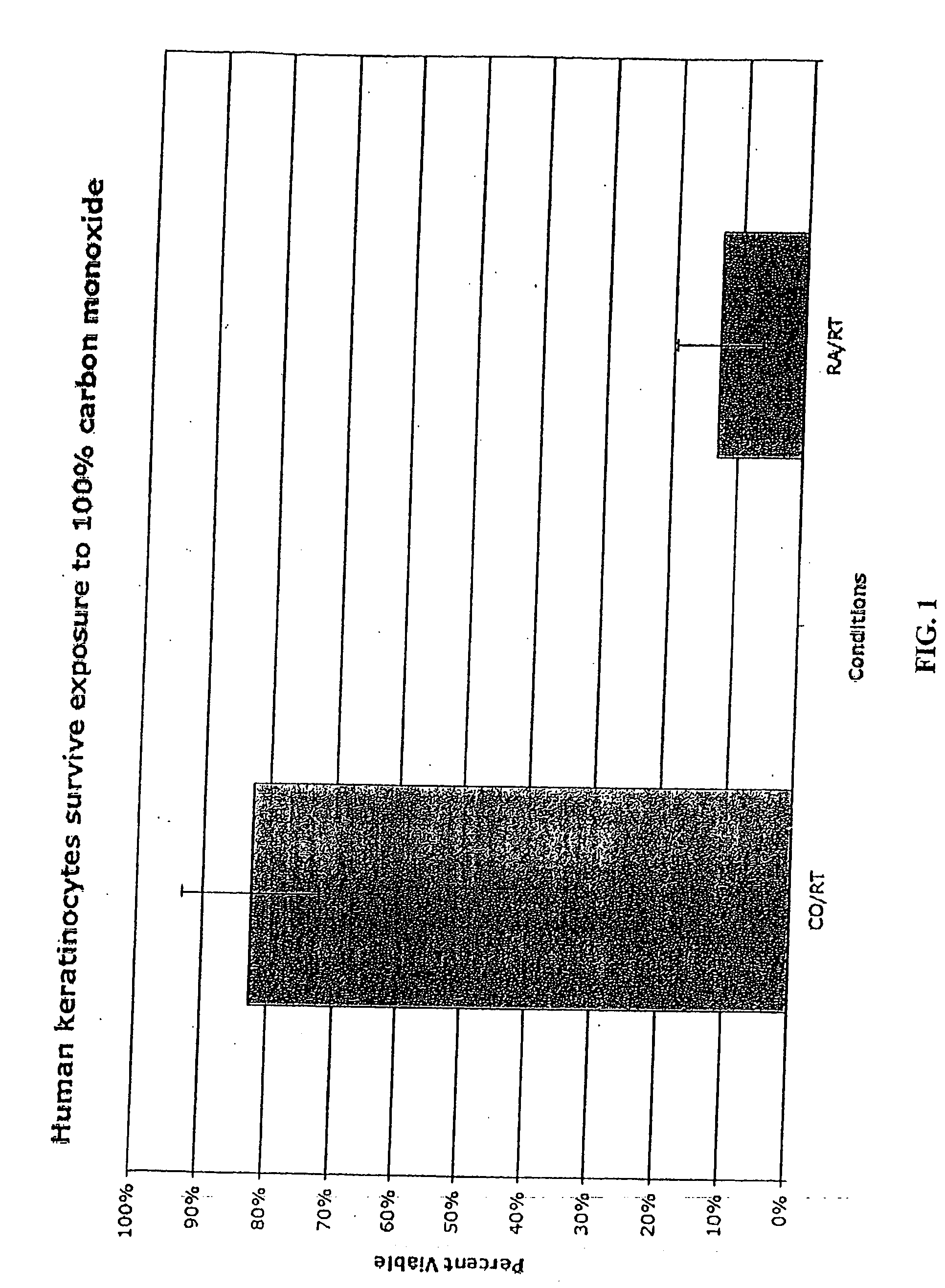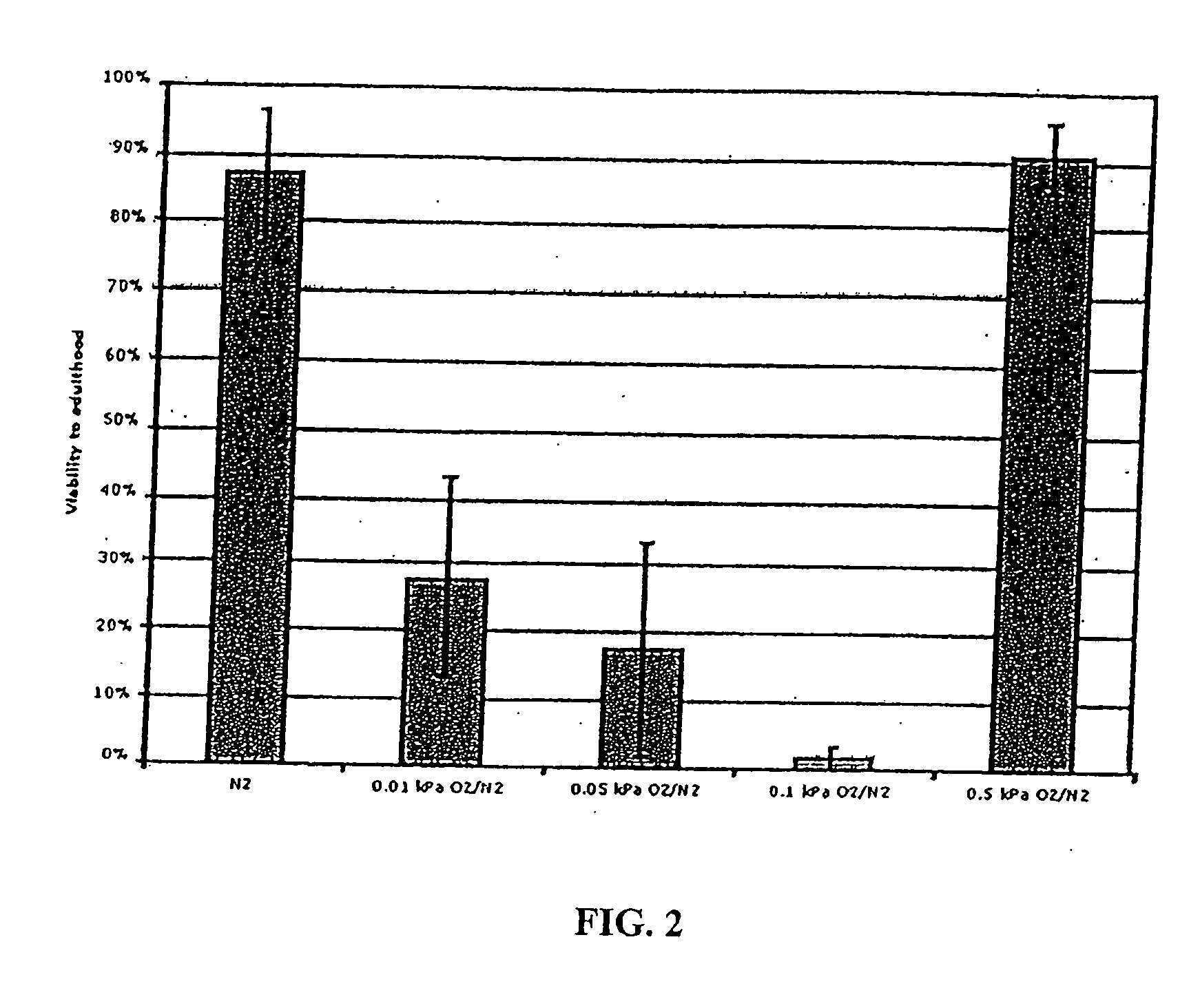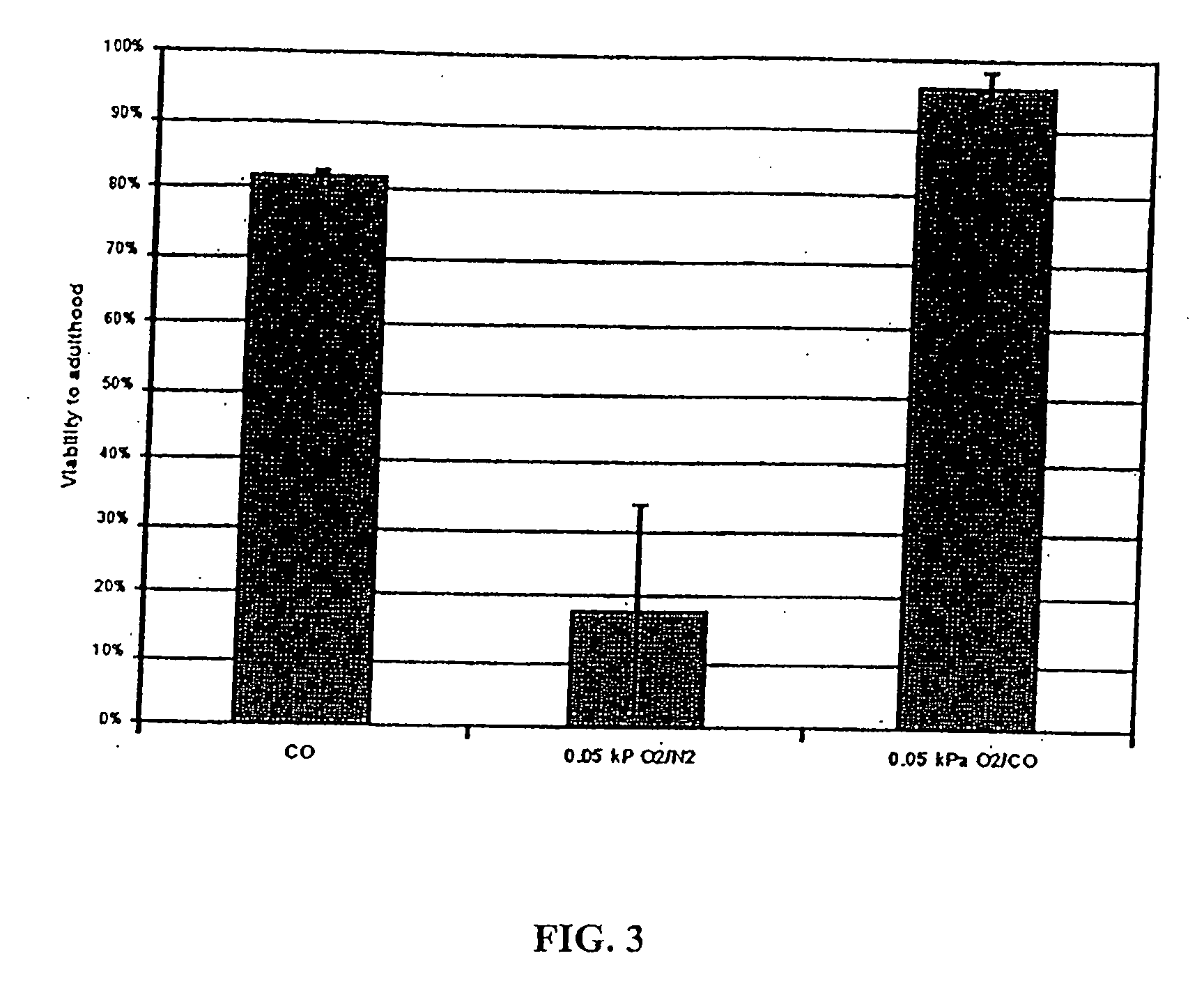Methods, compositions and articles of manufacture for enhancing survivability of cells, tissues, organs, and organisms
a technology of survivability and composition, applied in the field of cell biology and physiology, can solve the problems of inability to prolong the life of the organism, inability to depend on temperature for extended periods, and inability to maintain the survivability of the organism, so as to improve enhance the survivability of biological matter, and reduce the damage of biological matter
- Summary
- Abstract
- Description
- Claims
- Application Information
AI Technical Summary
Benefits of technology
Problems solved by technology
Method used
Image
Examples
example 1
Preservation of Nematodes in Carbon Monoxide
[0677] The atmosphere contains 210,000 ppm oxygen. Exposure to low levels of oxygen, or hypoxia, results in cellular damage and death in humans. In the nematode, C. elegans, oxygen concentrations between 100 ppm and 1000 ppm are also lethal. By critically studying the response of nematodes to a range of oxygen tensions, it was found that oxygen concentrations below 10 ppm and above 5000 ppm are not lethal. In 10 ppm oxygen balanced with nitrogen, nematodes enter into a state of reversible suspended animation in which all aspects of animation observable under the light microscope ceases (Padilla et al., 2002). In oxygen concentrations of 5000 ppm (balanced with nitrogen) and above, nematodes progress through their life cycle normally. In a search for drugs that protect nematodes against hypoxic damage, carbon monoxide was tested.
[0678] To achieve specific atmospheric conditions the following apparatus was used: a glass syringe barrel havi...
example 2
Preservation of Human Skin in Carbon Monoxide
[0681] Carbon monoxide is extraordinarily toxic to humans because it strongly competes with oxygen for binding to hemoglobin, the primary molecule that distributes oxygen to tissues. The fact that nematodes, which do not have hemoglobin, are resistant to carbon monoxide and even protected against hypoxic damage by this drug suggested the possibility that carbon monoxide would protect against hypoxic damage in human tissue in situations where blood is not present, such as in tissue transplant or blood free surgical fields. To tested this hypothesis using human skin.
[0682] Three human foreskins were obtained for this purpose. The foreskin tissue was preserved in keratinocyte growth medium (KGM) containing insulin, EGF (0.1 ng / ml), hydrocortisone (0.5 mg / ml) and bovine pituitary extract (approx. 50 micrograms / ml of protein). Foreskins were rinsed in PBS, and excess fatty tissue was removed. Each foreskin sample was divided into 2 equal pie...
example 3
Further Preservation Experiments with Nematodes
[0685] The following example contains information that overlaps and extends the information disclosed in Example 1.
[0686] A. Materials and Methods
[0687] Environmental chambers and apparati. Oxygen deprivation experiments were carried out using a custom atmospheric chamber designed by W. Van Voorhies (Van Voorhies et al., 2000). The chamber is a 30 mL glass syringe (Fisher #14-825-10B) fitted with a custom steel stopper that is lined with two viton o-rings to ensure a tight seal. The stopper is bored through and has a steel lure lock on the exterior face so that a hose carrying compressed gas can be attached. A defined gas mixture is delivered to the chamber at a constant pressure and flow rate from compressed tanks by passing first through a rotometer (Aalborg, flow-tube number 032-41ST) or mass flow controller (Sierra Instruments #810) to monitor flow rate and then through a 500 ml gas washing bottle (Fisher #K28220-5001) containing...
PUM
| Property | Measurement | Unit |
|---|---|---|
| Fraction | aaaaa | aaaaa |
| Temperature | aaaaa | aaaaa |
| Temperature | aaaaa | aaaaa |
Abstract
Description
Claims
Application Information
 Login to View More
Login to View More - R&D
- Intellectual Property
- Life Sciences
- Materials
- Tech Scout
- Unparalleled Data Quality
- Higher Quality Content
- 60% Fewer Hallucinations
Browse by: Latest US Patents, China's latest patents, Technical Efficacy Thesaurus, Application Domain, Technology Topic, Popular Technical Reports.
© 2025 PatSnap. All rights reserved.Legal|Privacy policy|Modern Slavery Act Transparency Statement|Sitemap|About US| Contact US: help@patsnap.com



